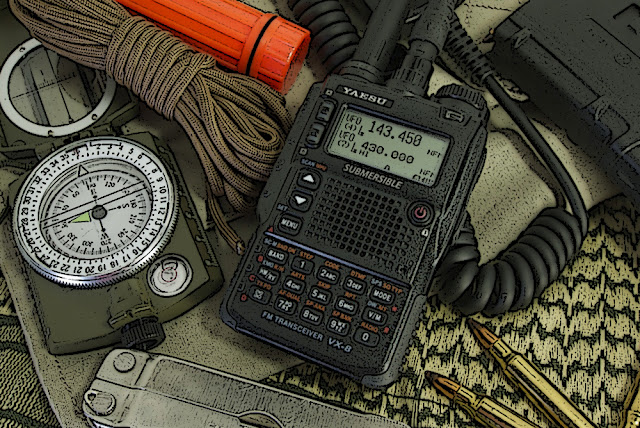Near Vertical Incident Skywave (NVIS)
From OH8STN...
Repeaters are down, the Internet is out. Your group has unexpectedly spread beyond Line-of-sight (LOS), and your fallback Rally Points are compromised! How communications with the entire group will be re-established, is a question that usually goes unanswered!
In preparedness, we can often rely too heavily upon VHF and UHF Communications, with lightweight and portable handheld radios. Let’s discuss how to mitigate the potential failure point.
If your group communication plan is heavily reliant on VHF and UHF radios, consider a fallback plan using HF NVIS. It will require gear investments, routine training, and the intention to reinforce a traditional VHF UHF Communications strategy. The benefits outweigh the pain! If your group finds itself forced into an unplanned withdrawal, NVIS may be the only way, to safely coordinate a new Rally Point. Remember, without a functioning repeater, the internet, or LOS, that brand new digital radio will at best, become a boat anchor. (https://oh8stn.org/blog/2022/08/20/beyond-los-line-of-sight/)
Near vertical incidence skywave, or NVIS, is a skywave radio-wave propagation path that provides usable signals in the medium distances range — usually 0–650 km (0–400 miles). It is used for military and paramilitary communications, broadcasting, especially in the tropics, and by radio amateurs for nearby contacts circumventing line-of-sight barriers. The radio waves travel near-vertically upwards into the ionosphere, where they are refracted back down and can be received within a circular region up to 650 km (400 miles) from the transmitter. If the frequency is too high (that is, above the critical frequency of the ionospheric F layer), refraction is insufficient to return the signal to earth and if it is too low, absorption in the ionospheric D layer may reduce the signal strength.
There is no fundamental difference between NVIS and conventional skywave propagation; the practical distinction arises solely from different desirable radiation patterns of the antennas (near vertical for NVIS, near horizontal for conventional long-range skywave propagation).
DX Engineering provided a document "A Practical NVIS Antenna for Emergency or Temporary Communications" that can be downloaded here: https://static.dxengineering.com/pdf/wp-nvis-rev2.pdf
A copy of "Near Vertical Incidence Skywave Communication: Theory, Techniques and Valadiation" by: David M. Fielder and Edward J. Farmer can be downloaded here: https://brushbeater.org/wp-content/uploads/2017/04/1996-fiedler-near-vertical-incidence-skywave-communication-book-worldradio-books-2.pdf


.png)


Comments
Post a Comment